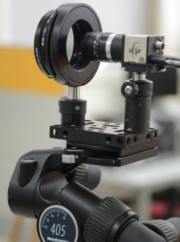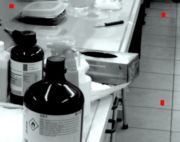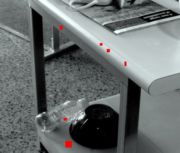Yoav Y. Schechner: Research
Self-Calibrating Imaging Polarimetry

To map the polarization state (Stokes vector) of objects in a scene, images are typically acquired using a polarization filter (analyzer), set at different orientations. Usually these orientations are assumed to be all known. Often, however, the angles are unknown: most photographers manually rotate the filter in coarse undocumented angles. Deviations in motorized stages or remote-sensing equipment are caused by device drift and environmental changes. This work keeps the simplicity of uncontrolled uncalibrated photography, and still extracts from the photographs accurate polarimetry. This is achieved despite unknown analyzer angles and the objects' Stokes vectors. We derive modest conditions on the data size, to make this task well-posed and even over-constrained. The work then proposes an estimation algorithm, and tests it in real experiments. The algorithm demonstrates high accuracy, speed, simplicity and robustness to strong noise and other signal disruptions.
Publications
- Yoav Y. Schechner, “Self-calibrating imaging polarimetry,” Proc. IEEE ICCP (2015).
Presentation
- Self-calibrating imaging polarimetry, (2.2 MB, PowerPoint). .
Software and Data
Matlab codes and polarimetric image data, as described in our paper. Available for non-commercial use. You can use it if you clearly acknowledge the source by citing "Self-calibrating imaging polarimetry" detailed above, in your work.- Documented matlab software implementing the algorithm described in the ICCP'15 paper Self-calibrating imaging polarimetry, including the image data used in the paper, to readily run as examples. (44 MB).
- Raw images captured by a Canon DSLR and a mounted linear polarizing filter, at several polarizer angles, in a couple of sessions. (130 MB).




